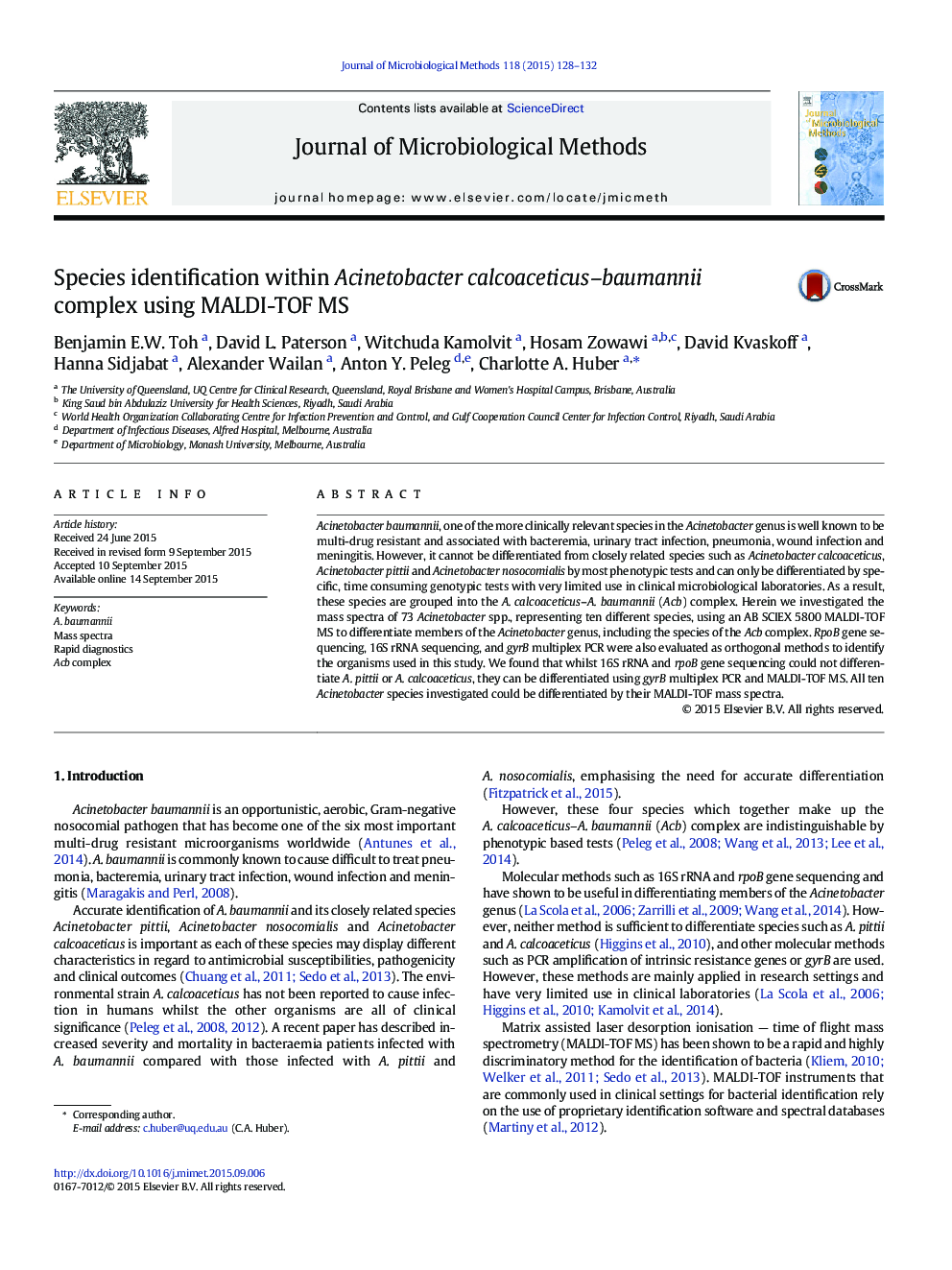| Article ID | Journal | Published Year | Pages | File Type |
|---|---|---|---|---|
| 2089766 | Journal of Microbiological Methods | 2015 | 5 Pages |
•A. baumannii is hard to differentiate from closely related Acinetobacter species.•MALDI-TOF based identification usually relies on proprietary software.•Here we differentiated A. baumannii from closely related Acinetobacter species.•Differentiation was done using MALDI-TOF and freely available open-source software.
Acinetobacter baumannii, one of the more clinically relevant species in the Acinetobacter genus is well known to be multi-drug resistant and associated with bacteremia, urinary tract infection, pneumonia, wound infection and meningitis. However, it cannot be differentiated from closely related species such as Acinetobacter calcoaceticus, Acinetobacter pittii and Acinetobacter nosocomialis by most phenotypic tests and can only be differentiated by specific, time consuming genotypic tests with very limited use in clinical microbiological laboratories. As a result, these species are grouped into the A. calcoaceticus–A. baumannii (Acb) complex. Herein we investigated the mass spectra of 73 Acinetobacter spp., representing ten different species, using an AB SCIEX 5800 MALDI-TOF MS to differentiate members of the Acinetobacter genus, including the species of the Acb complex. RpoB gene sequencing, 16S rRNA sequencing, and gyrB multiplex PCR were also evaluated as orthogonal methods to identify the organisms used in this study. We found that whilst 16S rRNA and rpoB gene sequencing could not differentiate A. pittii or A. calcoaceticus, they can be differentiated using gyrB multiplex PCR and MALDI-TOF MS. All ten Acinetobacter species investigated could be differentiated by their MALDI-TOF mass spectra.
